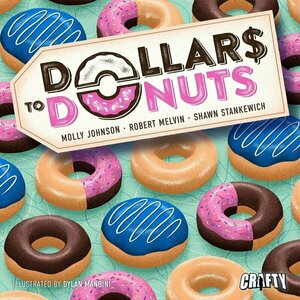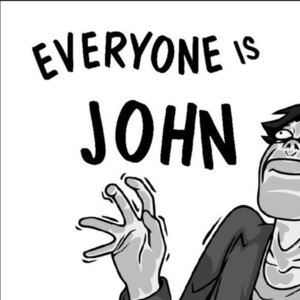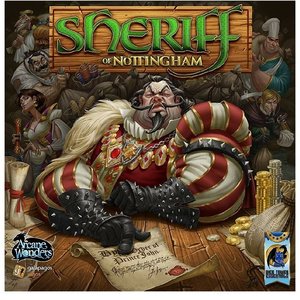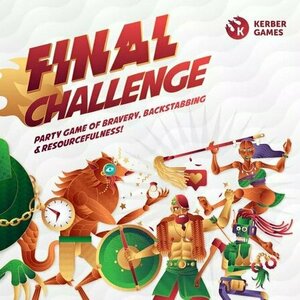
Final Challenge
Tabletop Game
Final Challenge is a party game so packed with action it does not have to pose as a drinking game!...
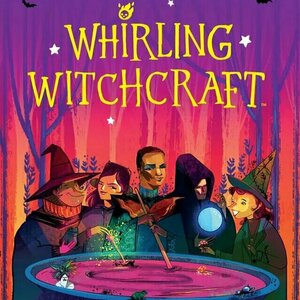
Whirling Witchcraft
Tabletop Game
Being a witch is all about wielding powerful magical ingredients — but a witch can wield only so...
Purple Phoenix Games (2266 KP) rated Dollars to Donuts in Tabletop Games
Jul 21, 2020 (Updated Jul 21, 2020)
Dollars to Donuts is a game where you are literally turning dollars into donuts. Pretty on the nose with the title, eh? Agreed, but once you play it, I promise you will be hooked.
DISCLAIMER: We were provided a prototype copy of this game for the purposes of this review. These are preview copy components, and the final components may be different from these shown. Also, it is not my intention to detail every rule in the game, but to give our readers an idea of how the game plays. You are invited to back the game on Kickstarter running until August 10, 2020, order from your FLGS, or purchase through any retailers stocking it after it is fulfilled. -T
There really are plenty of rules for this game, and I will not touch on everything. To setup, deal each player a board in their color along with the matching starting 1×1 donut tiles to be placed on the boards according to the rules, as well as the proper starting Dollar Tiles. Populate the Specials Board (shown below), reveal the top four Customer Cards (shown below), separate the Donut Tiles into like piles, and throw the rest of the Dollar Tiles into the cloth bag. The game is now ready to begin!
Each player will be purchasing a Donut tile (1×4) on their turn and placing it on their board. The interesting thing here is that these tiles do NOT have to be confined to the spaces on the Player Mat (board) – tiles can hang off the edge. And icons that are hanging off, however, cannot score or provide any benefit, so that is the trade-off. After placing the Donut Tile on the board, players will then collect Donut VP Tokens if placing on the board created a complete donut. If the placing created a mismatched donut, the player will instead collect as many Dollar Tiles as the highest number of $ symbols of the mismatched donut (so a plain donut half is worth $1 but a chocolate is worth $2 so a mismatched donut of those two flavors would count as $2). At this point, the player may choose to place a 1×1 double-sided Dollar Tile on their board to fill a gap, or hole, and I’ll be darned if you don’t use donut holes to fill holes in your board. Lastly, a player may then Serve a Customer using their earned Donut VP Tokens. Serving customers increases the value of the VP tokens, so serving is certainly beneficial.
Play continues in this fashion until a player has filled their empty board spaces with delicious donuts. Complete the round and then count the scores to see who really is the Donut Champ.
Components. Again, we were provided with a prototype copy of Dollars to Donuts, and upgraded components are stretch goals for a successful Kickstarter campaign. That said, the art on this is really great. Dylan Mangini can illustrate games superbly for sure. I love the colors they have chosen, the art style, and fun start player token that came with it (and I hope it is something that can be offered to all through a stretch goal or something). I have no complaints here and I look forward to seeing how the final products looks.
So it is absolutely no surprise that I loved this one. I have a special place in my heart for games with ever-changing resource costs, tile-placing, donuts, multi-use components, and donuts. I love being able to use any part of the Donut Tiles, even if my board looks kooky at the end (see below). It’s so refreshing when a game comes along that takes a comfortable given and turns it on its head. We all know how to keep components within the boundaries of our player board. But WHYYYYY? Dollars to Donuts fixes that, even at the cost of our more organized players’ sanity. I simply love this game and can’t wait to get my final copy. If you also are excited to grab a copy of this one, head over to Kickstarter and join the campaign going on NOW (at the time of this writing) until August 10, 2020. I would also suggest ordering a dozen or two of your favorite bakery treats to have on hand when you play this – your tummy will thank you. Unless you’re diabetic. Then I am sorry.
BadgerMuffin (48 KP) rated Everyone is John in Tabletop Games
Jun 4, 2019
Everyone is John is a game where all the players control a single character. Each player is one part of a split personality, each with their own goals and skill sets. The Game Master gives you a scenario and each player bets a value of willpower, whoever has the highest amount of willpower bet gets to control John until they fail a skill check.
This game is high speed, and makes a good game for any night. It's easy to pick up, and easy to screw over your friends. For a game that is free, this is incredible. Honestly, I'd pay at least £10-£15 for this game.
Gameplay is fun, and sparks conversation around the table. With John being a sociopath you can pretty much do anything.
TL;DR
-Incredible Game
-Easy to Play
-FREE! (But I'd totally pay for it)
-Good Sobre & Drunk
Entertainment Editor (1988 KP) rated Race for the Galaxy in Tabletop Games
Mar 7, 2018
Reviewer: Josh Edwards
Read the full review here: http://www.boardgamereviewsbyjosh.com/2011/02/race-for-galaxy-review.html
Dillon Jacoby-Rankin (202 KP) rated Sheriff of Nottingham in Tabletop Games
Jan 18, 2020
Bluffing and Bribing are encouraged in this game. It's how you win and learn who your real friends are. Are they lying about bribing you with a free contraband if you don't check their bag? Is it really in their bag? Should you take it or check them anyway? Such a hard choice.
Make and lose friends in this game which is sure to become a classic as it grows in popularity with your group. My and my friends love it! There is deffinently some strategy in there as to what to bring to market and when but there is also a bit if luck as to whether you will get checked or not. Either way the game is a blast and I recommend it to any group as it plays a decent size group.

The Life and Career of David Beckham: Football Legend, Cultural Icon
Book
David Beckham is an English soccer player whose popularity extends beyond the field and into...

Theo: Growing Up Fast
Book
When the name of Theo Walcott was included in the England squad for the 2006 World Cup, shock waves...

Dennis Brain: A Biography
Book
Dennis Brain is recognized as perhaps the greatest horn player the world has known. He helped rescue...

Don Kenyon: His Own Man
Book
Don Kenyon was a 'leader of champions and a champion of leaders' for good reason: he was his own...
